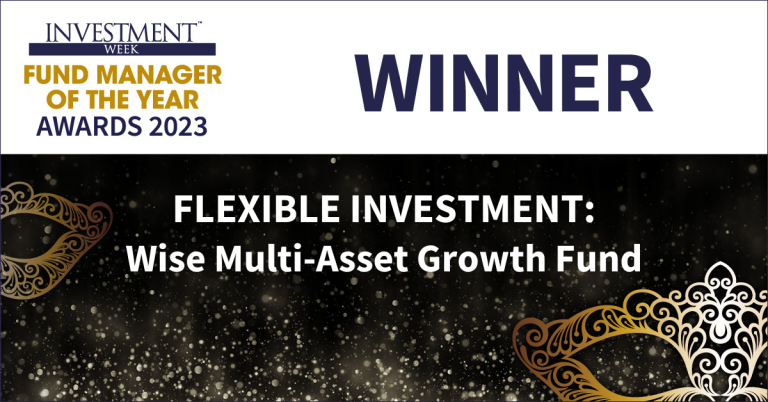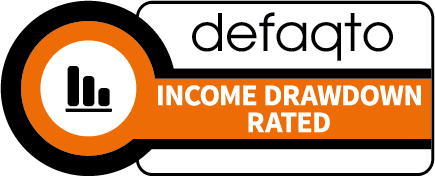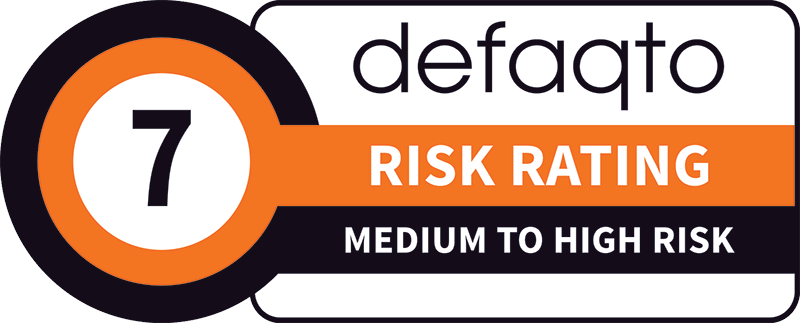Wise Multi-Asset Growth
Investment Objective
The investment objective of the Fund is to provide capital growth over Rolling Periods of 5 years in excess of the Cboe UK All Companies Index and in line with or in excess of the Consumer Price Index, in each case after charges.
Fund Attributes
- Aims to provide long term capital growth (over 5 year rolling periods) ahead of the Cboe UK All Companies Index and inflation.
- Specialised focus on investment trusts across asset classes.
- Adopts a value bias investment approach.
- Focus on high-quality funds and investment trusts investing in out-of- favour areas.
- Preference for fund managers with a disciplined, easy-to-understand investment process.
Investor Profile
- Seek capital growth over a long time frame.
- Accept the risks associated with the volatile nature of an adventurous multi-asset investment.
- Plan to hold their investment for the long term, 5 years or more.
Key Details
| Target Benchmark | Cboe UK All Companies, UK CPI |
|---|---|
| Comparator Benchmark (Sector) | IA Flexible Investment |
| Launch date | 1st April 2004 |
| Fund value | 80.2 million (GBP) |
| Holdings | 36 |
| Valuation time | 12pm |
- Past performance is not a guide to the future
- Data as at 29th February 2024
- Wise Funds Ltd are delighted that our Wise Multi-Asset Growth Fund was announced as winner of the Flexible Investment Category at the prestigious Investment Week’s Fund Manager of the Year awards.

Fund Ratings





Fund Commentary - March 2024
March was a strong month for risk assets (equities, bonds and commodities), supported by central banks that, while keen to manage expectations, continue to send messages of financial easing to come. Market participants have gradually shifted their views, however, from seeing rate cuts as a necessary condition for returns to continue their march ahead, to seeing them as a nice to have. Indeed, investors’ focus now appears to be more on the growth side of the equation than on the inflation one and, with the former surprising on the upside, the thinking goes that even if interest rates do not come down as much as hoped for a few months ago, provided this is because growth is robust as opposed to inflation staying too high, all is well.
Data over the month generally showed that growth remains strong on both sides of the Atlantic, which was acknowledged by both the chairman of the US central bank and the Bank of England. On the other hand, inflation remains hard to predict, with another set of sticky prints in the US but more encouraging ones in the UK and the Eurozone. The US is closer to the target of 2% inflation that central banks aim for, and it might thus be a good illustration of how much more difficult the last few steps are going to be before claiming victory. As a result, bond investors in the US continued to push future interest rate cuts out, now pricing in only three cuts by the end of the year versus four at the start of March and seven at the start of the year. Three is the number predicted by the US central bank so, for the first time in months, markets and policy makers are now aligned.
As mentioned, however, while such sharp moves in interest rates expectations would have led to weak equity markets last year, equity investors have their eyes firmly on growth and if higher for longer interest rates is the price to pay, so be it. Equities were thus positive in March, led by UK large companies for once, supported by the positive comments from the Bank of England but also by the strong performance of oil companies which represent the largest sector in the index. Oil had a good month as not only the growth outlook appears supportive but also thanks to an extension to the production cuts from the world’s largest producers (less production means greater competition from demand and thus higher prices). US equities also had a positive month, although it is worth noting that smaller companies started performing better, in the short-term at least, than their large technology-oriented competitors. More growth sensitivity and cheaper valuations should indeed have that effect, so investors might be getting more sensible again after the exuberance that led them to turn a blind eye on record valuations in some parts of the market. Even emerging markets had a better month, helped by better economic activity data from China and despite the absence of any new stimulus announced at the annual National People’s Congress.
If growth indeed is the new focus for investors, as opposed to inflation and interest rates, then close attention will need to be paid to how companies deliver on their earnings in the next few months. The risk is that, as is the nature of financial markets, expectations are already high in some sectors. When combined with high valuations, it creates room for disappointment. The new record high for gold prices, a traditional safe haven, might be an indication that risks have not fully vanished, and we thus continue to opt for sound investments with attractive upside but only if they benefit from valuations support.
In March, the IFSL Wise Multi-Asset Growth Fund was up 2%, behind both the CBOE UK All Companies Index (+4.6%) and its peer group, the IA Flexible Investment Sector (+2.8%). As alluded to in the earlier section, with large oil companies pulling the index higher, we struggled to keep up. Our bias tends to be towards smaller companies, where we see the most risk/reward potential. That said, some of our UK managers (JO Hambro UK Equity Income, Man GLG Undervalued Assets), thanks to their value bias, are exposed to that theme. More generally, all of our UK funds contributed positively to performance, particularly Fidelity Special Values and Aberforth Smaller Companies, despite their discounts widening. Following the new record high in gold, the Jupiter Gold & Silver Fund was our strongest contributor to performance. This is hopefully the start of precious metals miners grabbing the attention of equity investors and catching up on the strong performance of the underlying metals they have lagged for months. Other strong performers were BlackRock World Mining Trust and the Ecofin Global Utilities and Infrastructure Trust.
On the negative side, the only detractor of note was International Biotechnology Trust which gave some of its gains since the end of October back, mostly through a widening of its discount as opposed to poor performance from the underlying portfolio.
In terms of portfolio activity, as our strategy and discipline dictate, we used the strong markets to take some profits in a number of positions: JO Hambro UK Equity Income, Aberforth UK Smaller Companies, AVI Global Trust, AVI Japan Opportunity and Polar Capital Global Financials. We also exited our position in BlackRock Frontiers, a trust investing in smaller emerging markets which has performed strongly over the past few years and had become a small position after a few rounds of profit taking.

